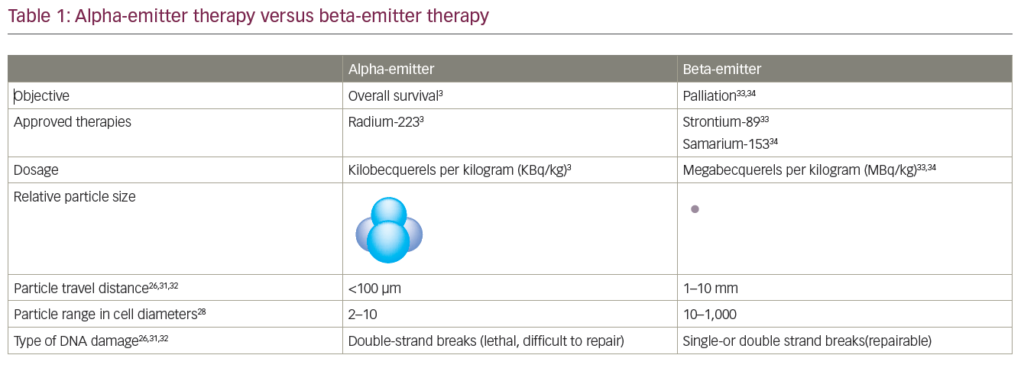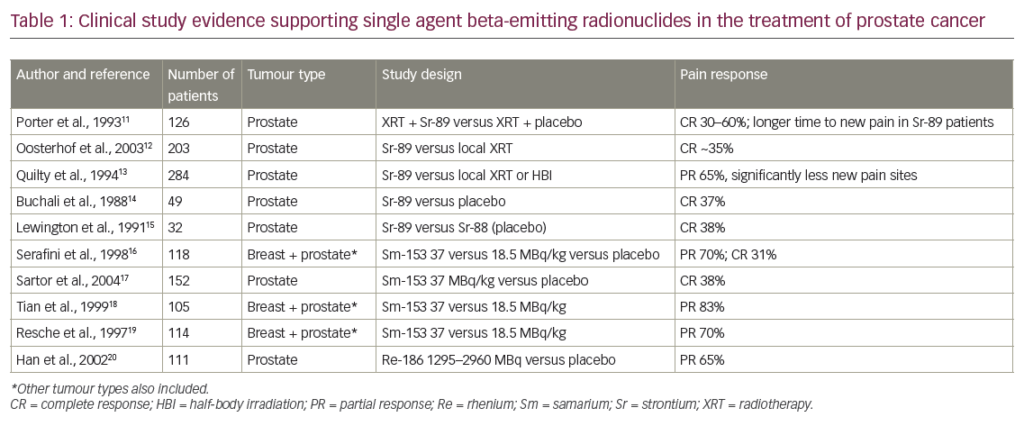Can PSA be used for early detection?
Since the early 1990s I have been involved in prostate cancer research. In those years one of the key research questions was whether prostate-specific antigen (PSA)-based screening could reduce disease-specific mortality. The first results using the PSA test in combination with a digital rectal examination (DRE) published in 1991 in the New England Journal of Medicine, showed encouraging results.1 With using the PSA test, applying a cut-off ≥4.0 ng/ml, 33% more prostate cancers were detected with the majority being organ confined, and hence candidates for treatment with curative intent.1 While this was seen as a positive result, the possibility of over-diagnosis was mentioned.
To assess the effect of PSA-based screening on disease specific mortality, a randomized controlled trial (RCT) is the way to go. Both in Europe and the US, RCTs were initiated in 1993. In the US within the Prostate, Lung, Colorectal and Ovarian (PLCO) screening trial,2 and in Europe within the eight-country consortium, the European Randomized study of Screening for Prostate Cancer (ERSPC).3
Outcome of the randomized controlled trials
Trial initiation was followed by a long period of recruitment, randomization, screening, and gathering data on incidence and mortality, in both arms. I was responsible for the Dutch part of ERSPC, randomizing more than 42,000 in the region of Rotterdam. In total the ERSPC included more than 182,000 men.3 In the US, approximately 76,000 men participated in the so-called P-arm of the PLCO trial.2
In 2009, both trials published their results on the main outcome, which was prostate cancer-specific mortality. The data had been long awaited. While evidence on the effect on mortality was lacking, use of the PSA test for screening purposes had become more or less standard practice (especially in the US). Both trails showed contradictory results which unfortunately caused even more uncertainty. The ERSPC trial showed that with repeat PSA-based screening in men aged 55–69 years, at time of inclusion, prostate cancer specific mortality was reduced by 20%, as compared with no, or very low, rates of opportunistic PSA testing.4 The PLCO trial concluded that there was no effect on prostate cancer specific mortality.5
The conflicting outcomes of the ERSPC and PLCO trials resulted in a lot of debate on which one was to be believed, and which one not. I felt this to be a loss since we could learn a lot from the huge amount of data the two trails generated. The following observations became clear from both trials: that an elevated PSA test should never directly trigger a prostate biopsy; very low PSA levels (i.e., <1.0 ng/ml) in men within this age group of 55–70 years should result in retesting after a long interval (e.g., >5 years) or even in no further testing; and that men who started screening at age >70 are more likely to experience more harm than benefit. In addition, the data showed that the rate of metastatic disease at time of diagnosis declined by approximately 40%; while on the other hand, 70% more prostate cancers were diagnosed through active screening, with at least half of these diagnoses considered as being over diagnosed and often over treated. Any valuable information which came as a result of these trials, especially the first few years after 2009, was completely overwhelmed by a classical “he said, she said” discussion.
After the outcome of the trials
In daily clinical practice confusion remained and guidelines interpreted the outcome of the trials very differently, with an obvious transatlantic gap. In the US, in 2012, the US Preventative Services Task Force (USPSTF) released a so-called D recommendation against PSA-based screening for all ages.6 This was not followed by other US organizations, like the American Urological Association (AUA), and also not in Europe. In the US, the general consensus was that PSA screening was allowed as long as men were fully informed about the potential harms and benefits, and that men with a life expectancy <10 years should refrain from (further) testing. On paper this looks logical; however, in daily clinical practice these recommendations are not always easy to follow. For example, data appeared from countries such as the UK and Sweden revealing that men were more frequently tested at higher age, men were often not informed about being tested, and 50% of men with low PSA values (<1.0 ng/ml) were in fact retested within 3 years.7,8 While, due to the uncertainty about the effect of PSA-based screening on disease specific mortality, mass screening was discouraged, opportunistic testing was going on, and in fact perhaps causing even more harm. The Swedish arm of the ERSPC trial compared the outcome of organized screening (as was done in the intervention arm of ERSPC) with opportunistic screening (as occurred in the Swedish control arm of ERSPC), and concluded that opportunistic screening resulted in over diagnosis and subsequent over treatment, while there was no effect on the rate of metastatic disease or disease specific mortality.9
The end of the debate and focus on what is important
Luckily, two recent publications put, at least in my view, an end to the discussion of whether or not PSA-based screening can save lives. The first publication appeared in the New England Journal of Medicine in 2016.10 For this study, the PSA testing rates in the control arm of the PLCO trial were re-evaluated. It transpired that the proportion of control participants who reported having undergone at least one PSA test before or during the trial, was close to 90%. This implies that the two arms of the trial were in fact, more or less, comparable with respect to the intervention being tested, and it is highly unlikely that such a set-up would be able to demonstrate any effect if present. Very recently, a manuscript using analytic and microsimulation models was published in the Annals of Internal Medicine. The authors concluded that “After differences in implementation and settings are accounted for, the ERSPC and PLCO provide compatible evidence that screening reduces prostate cancer mortality”.11 Finally, I truly hope the discussion on whether PSA-based screening can save lives (I believe it can!), can stop, and we can now focus on the question: who are those men that can benefit from an early detection of their prostate cancer?
This question has and still is the basis of my scientific work related to prostate cancer. So far, it has led us to important lessons with respect to PSA-based screening as I mentioned earlier. When focusing on risk stratification it is obvious that an elevated PSA level should never trigger biopsy or even imaging, such as magnetic resonance imaging (MRI). Reflex testing is the way to go. Reflex testing is using other available relevant information to assess the individual risk of having potentially life-threatening prostate cancer. Whether this should be done with the use of an additional biomarker (where we should be aware of costs), or multivariate risk prediction tools (often cheaper but perhaps less straightforward to use), is a matter of personal choice while we lack proper head-to-head comparisons. Despite this, the fact remains that it should be done. Multivariate risk prediction has the potential to save 30–50% of unnecessary prostate biopsies or MRIs.
Next to this, diagnosis should be uncoupled from treatment. While, with multivariate risk stratification, we are able to more selectively diagnose potentially life-threatening prostate cancer, over diagnosis, remains an issue. These low risk prostate cancers, often defined as T1C Gleason 6 or even Gleason 7 prostate cancers, with favorable characteristics (e.g., without cribriform growth pattern), should not be treated actively. Instead, these men should be put on active surveillance, a treatment strategy with the aim to switch to active curative treatment if progression should occur.
So, while we now know that PSA-based screening can save lives it is crucial to organize our screening efforts in such a way that we only screen those men that can benefit. My motto with respect to the PSA test is “use responsibly”; stopping PSA testing is not the way to go, but testing every man over and over again is also wrong. With the many ongoing research projects, especially in the field of omics and imaging, I am confident that we will succeed to lower the rate of men suffering and dying from the disease and at the same time avoid men suffering from an unnecessary biopsy or diagnosis.















